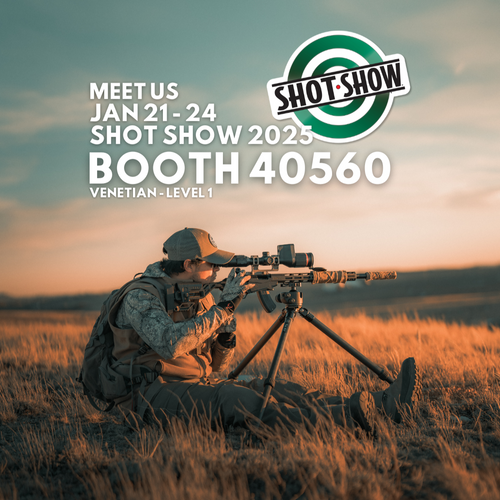Heat Detection Binoculars: An Indispensable Tool for Nocturnal Exploration and Hunting
Heat detection binoculars are crucial for exploring and hunting in the darkness, revealing hidden mysteries. Within this category, two main technologies stand out: Thermal imaging binoculars and night vision binoculars. Understanding their differences is essential for selecting the right tool. Let's explore each technology, highlighting their unique capabilities and applications.
Thermal Vision Binoculars: How They Work
Thermal vision binoculars, also known as thermal imaging binoculars, use thermal imaging technology to detect infrared radiation emitted by objects due to their temperature. Here's how they work:
- Detection of Infrared Radiation: Thermal vision binoculars use microbolometer sensors highly sensitive to infrared radiation. These sensors detect heat signatures emitted by objects.
- Conversion into Visible Images: The microbolometer sensors convert the detected infrared radiation into electronic signals. The binoculars' onboard electronics then process these signals to create a thermal image.
- Displaying Thermal Images: The generated thermal image is displayed on the viewing screen, often with a color palette to show different temperature ranges. Warmer objects appear in brighter colors, while cooler objects appear in darker colors.

Guide TN Normae Series Thermal Vision Binoculars
The TN Normae Series, designed by Guide Sensmart, offers a classic, ergonomic design for comfort during extended use.
With a high-sensitivity VOx uncooled IR detector, these binoculars deliver top-tier imaging quality on a full-color OLED 1024×768 high-definition display.
They also feature functions like photo and video capture, WIFI connectivity to run the TargetIR App, laser ranging, GPS, and a compass.
Night Vision Binoculars: How They Work
Night vision binoculars enhance visibility in low-light conditions by amplifying ambient light, including moonlight, starlight, or artificial light. Here's how they work:
- Objective Lens: The objective lens in night vision binoculars captures ambient light from the environment. This collected light is crucial as it initiates the entire night vision process.
- Photocathode: After passing through the objective lens, the light reaches the photocathode. This essential component converts incoming photons (light particles) into electrons, transforming light energy into an electronic signal.
- Microchannel Plate (MCP): The electrons from the photocathode then move through the microchannel plate, an array of tiny channels. Here, electron multiplication occurs, significantly amplifying the number of electrons and the electronic signal.
- Phosphor Screen: Finally, the amplified electronic signal hits the phosphor screen, a luminescent surface. Upon impact, the electrons release photons, creating a visible image that accurately represents the original scene. This results in the green-tinted imagery typical of night vision devices.

Guide DN Series Handheld Digital Vision Binoculars The DN Series, including the DN30 model, offers 4K ultra-high-definition visuals with a 3840x2160 @2μm moonlight low-light CMOS sensor and 1920x1080 AMOLED display. These binoculars provide exceptional clarity and detail, both day and night, with features like infrared fill light, making them ideal for wildlife observation, security operations, and outdoor exploration.
Differences Between Night Vision and Thermal Imaging
- Light Requirement: Night vision amplifies nearby visible light, while thermal imaging detects temperature differences without needing a light source. Thermal imaging will perform better than night vision in low light conditions.
- Image Presentation: Night vision renders scenes in green-tinted images, whereas thermal imaging shows heat signatures in colors like bright yellow, orange, or red.
- Environmental Performance: Night vision can be impaired by dust, smoke, overcast skies, rain, and fog, while thermal imaging is unaffected and can operate in complete darkness.
- Cost and Quality: Night vision is generally less expensive but offers lower quality compared to thermal imaging, which provides better performance and is highly sought after for enhancing nighttime safety.
Key Considerations When Choosing Heat Detection Binoculars
- Purpose: Determine if you need them for surveillance, wildlife observation, hunting, or industrial inspections.
- Environmental Conditions: Consider temperature variations, humidity levels, and exposure to water or dust.
- Budget: Set a budget and prioritize essential features.
- Performance: Evaluate magnification, resolution, field of view, and refresh rate for optimal performance.
- Reviews and Recommendations: Read reviews and seek expert recommendations to gauge the performance and reliability of different models.
Conclusion
Selecting the right heat detection binoculars involves understanding the differences between thermal and night vision technologies. Whether you need precise thermal imaging or enhanced visibility in low-light conditions, there's a binocular option for your specific needs. Consider purpose, environmental conditions, budget, performance, and expert insights to make an informed decision.
Guide Sensmart USA offers a wide range of heat detection binoculars starting below $2,000, including the TN430, TN450, TN630, TN650 and DN30. Designed for comfort and functionality, these binoculars provide superior night vision capabilities for various scenarios.





Leave a comment
This site is protected by hCaptcha and the hCaptcha Privacy Policy and Terms of Service apply.